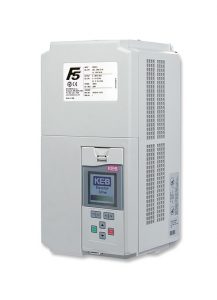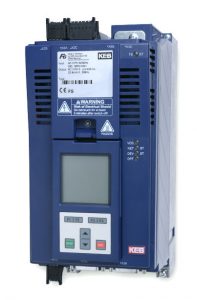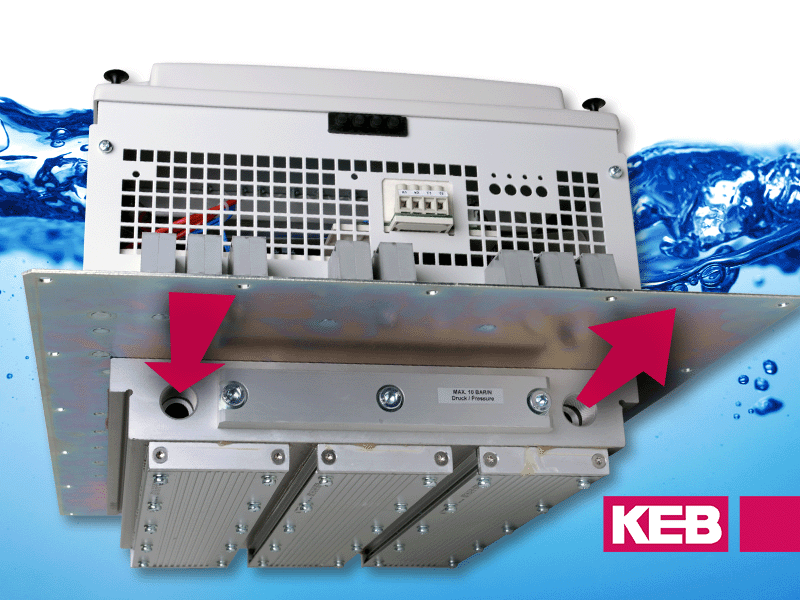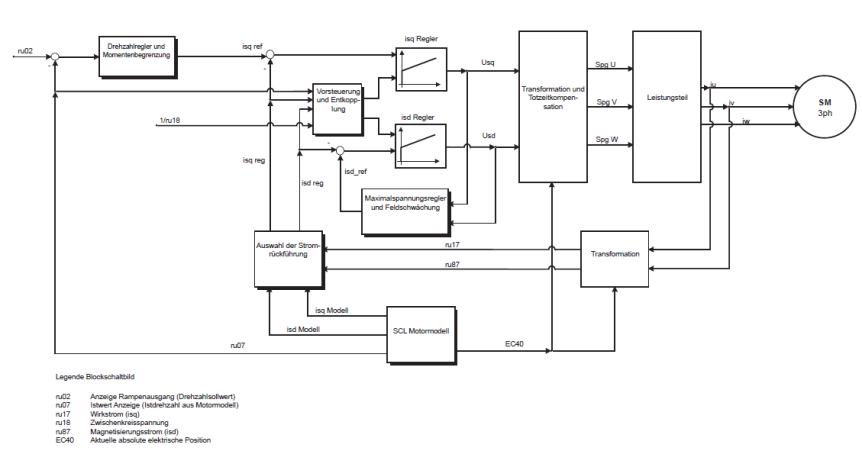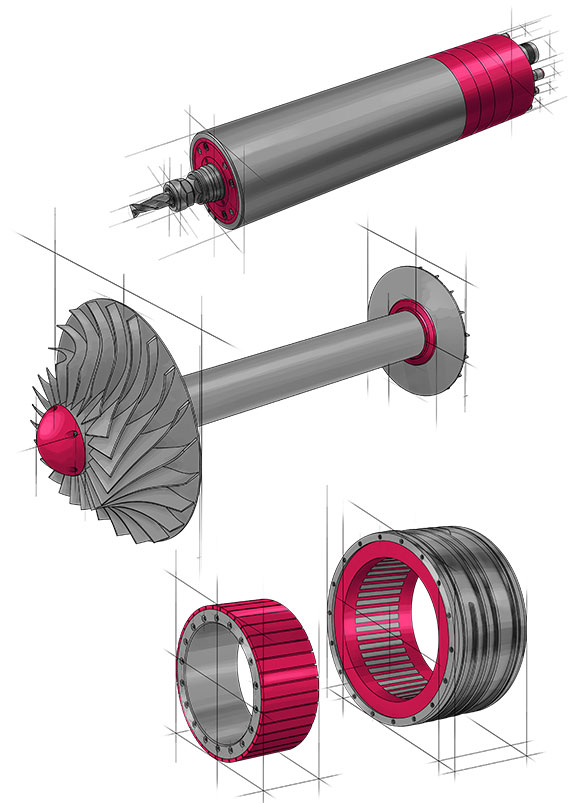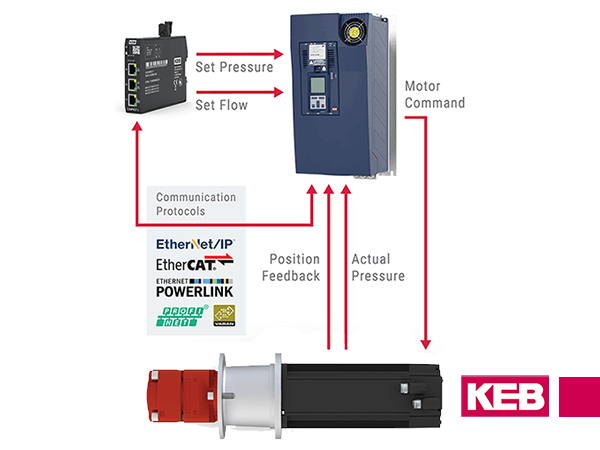In this series of blog posts, we are looking at some special functions available in the KEB variable frequency drives (VFDs) which provide increased performance. Other VFD performance application posts included:
- Voltage Stabilization
- UPS Function
- Flying Start
- Quick Stop
- DC Injection Braking
- Brake Handling
- Flying Start
In this post we will discuss the liquid cooling flow control used with KEB’s liquid cooled drives.
Liquid Cooled VFDs
The liquid cooling option for the KEB VFD provides a great solution for demanding VFD applications. High ambient conditions, sealed systems and high speed, high power applications are great fits for the KEB VFD liquid cooling option.
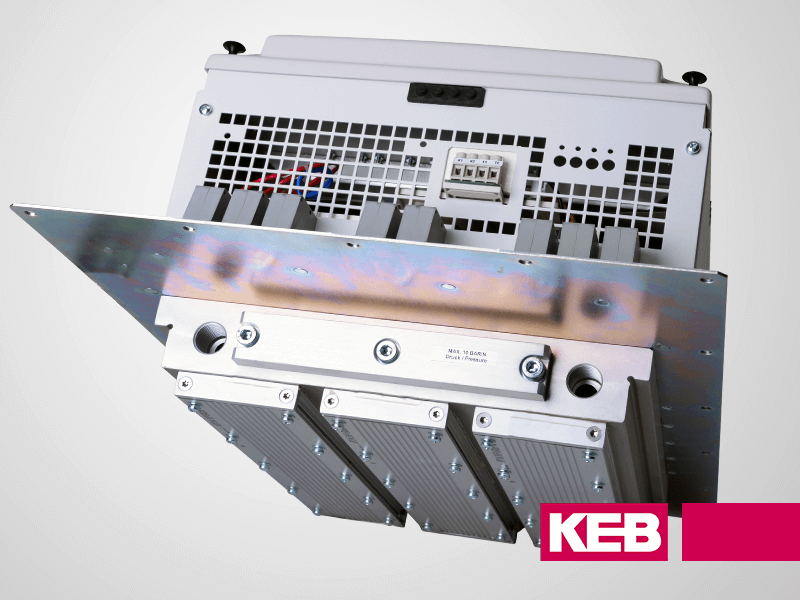
By keeping the operating temperature of the VFD and the internal components within design specifications, the lifetime of the VFD can be maximized. When dealing with high ambient conditions, which can include high temperature and/or high humidity, the liquid cooling option on KEB drives provides a solution to help maximum the lifetime of the system.
Utilizing the extensive experience in applying liquid cooled VFD’s in multiple types of applications; KEB has developed a flow control solution which further enhances the benefits of the available liquid cooling option.
Flow Control
The KEB VFD incorporates a software based flow control as standard in the control system of the VFD. The flow control setup gives the user the flexibility to customize the control to their application. The KEB flow control utilizes an external valve (customer supplied) which is cycled based on the heatsink temperature of the VFD. The heatsink temperature comes directly from temperature sensors mounted on the heatsink of the VFD. The flow control allows the user to set a desired reference temperature, which is used in an internal PI loop to maintain a desired heatsink temperature.
- Related Article: How a PI Controller in a VFD Speed Control Works
Depending on the valve design, it may be possible to control the valve directly from an available output relay on the KEB VFD. If this is not possible due to the current demand of the external valve, then a solid state relay can be used in concert with the KEB output relay for the valve actuation.
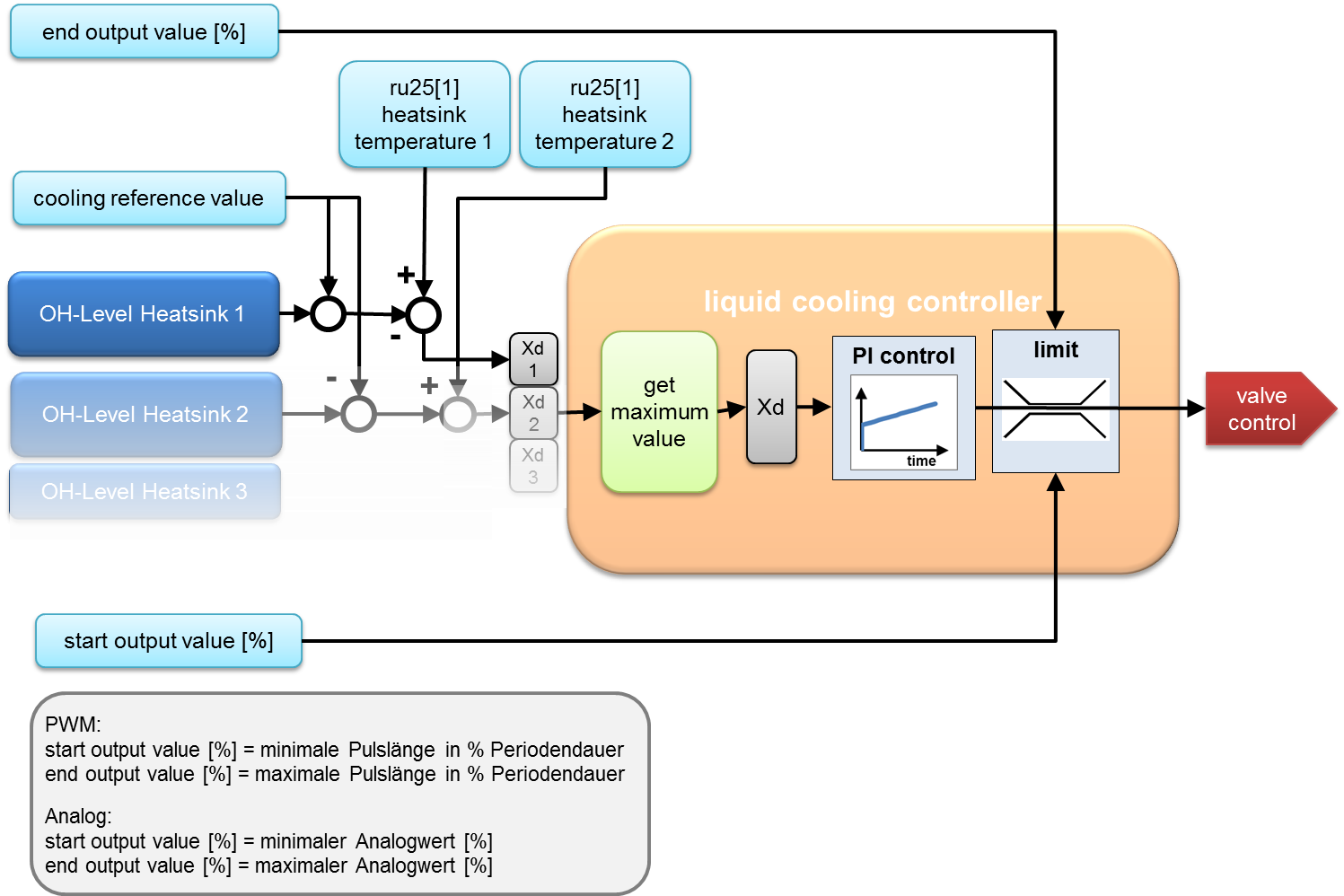
Controlling the heatsink temperature at a programmed level gives a couple benefits to the system. Coolant use can be minimized as only the required amount of cooling fluid is used to maintain the programed temperature. For example, if the inlet temperature of the system is low, and the utilization of the VFD is intermittent, then minimal cooling may be needed to keep the VFD within the operating temperature design specifications.
Another benefit comes when applying the VFD in high humidity applications. If the cooling plate of the liquid cooled heatsink is cooled to a temperature below the dew point, then there is a possibility that condensation could form on the internal potion of the cooling plate. To help avoid this situation, the temperature set point of the flow control can be set to a value above the dew point minimizing the possibility of condensation forming on the internal chill plate.
- Related Article: Flat Back (Cold Plate) VFD Heatsinks
In addition, if the cooling fluid inlet temperature varies, for example if cooling tower water is used, the flow control will adapt to this changing inlet temperature. As the inlet temperature rises, the flow control will utilize more cooling fluid. As the inlet temperature is reduced, less cooling fluid would be needed to maintain the designed heatsink temperature.
Contact a KEB Engineer today to discuss your application and how the KEB can provide a solution to your application requirements.
Let's Work Together
Connect with us today to learn more about our industrial automation solutions—and how to commission them for your application.
